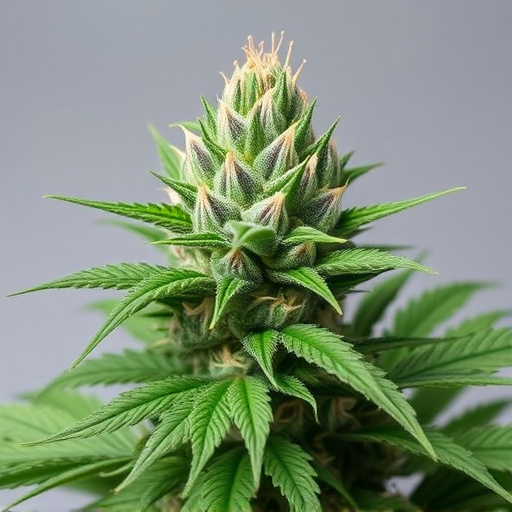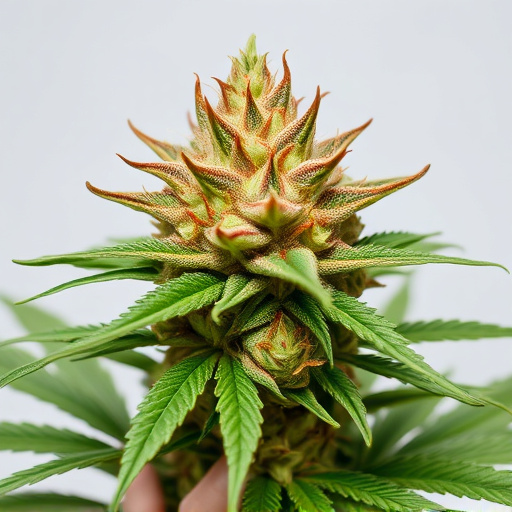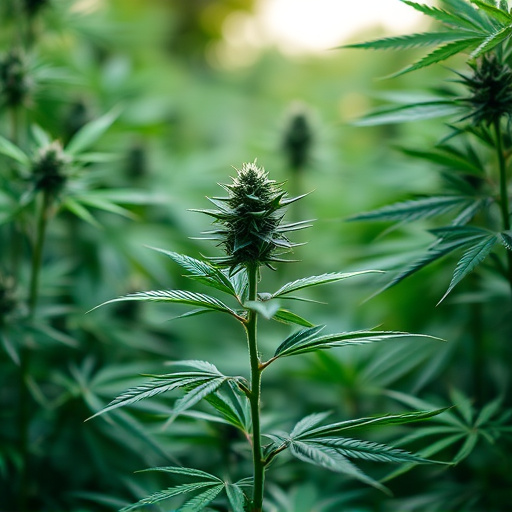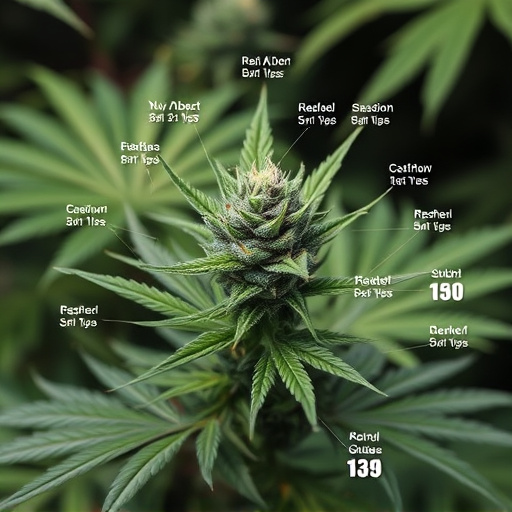Full-spectrum cannabis flower includes all natural compounds like terpenes, flavonoids, and other cannabinoids besides THC and CBD, offering an entourage effect that enhances therapeutic properties. Isolated cannabinoids, focusing on single or two compounds, provide precise control and customization for specific conditions like chronic pain and epilepsy. When choosing between full-spectrum and isolated strains of medical cannabis, consider the balanced profile and potential complementary benefits of full-spectrum versus the targeted therapy of isolation, based on individual needs and preferences.
“Unravel the distinct world of full-spectrum and isolated cannabis flower—two prominent forms in the realm of medical cannabis. Full-spectrum cannabis offers a symphony of terpenes and cannabinoids, mimicking nature’s blend. Conversely, isolated cannabinoids provide concentrated benefits targeted at specific ailments.
This article guides you through understanding these strains’ unique characteristics, their potential health advantages, and how they differ in terms of therapeutic applications, catering to diverse patient needs.”
- Understanding Full-Spectrum Cannabis Flower
- Isolated Cannabinoids: Unlocking Specific Benefits
- Comparing Health Benefits and Uses
Understanding Full-Spectrum Cannabis Flower
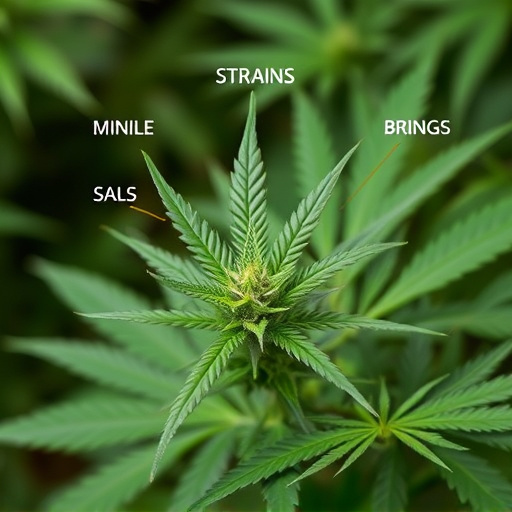
Full-spectrum cannabis flower refers to strains that contain all the natural compounds found in the plant, including terpenes, flavonoids, and other cannabinoids besides THC and CBD. This means that when you consume full-spectrum cannabis, you get the entourage effect—a synergistic interaction between these various compounds that may enhance or amplify their individual therapeutic properties. As a result, full-spectrum strains are often sought after for their potential to offer more balanced and comprehensive relief from a range of symptoms, making them popular among those who use medical cannabis for its medicinal benefits.
These strains differentiate themselves from isolated cannabis flower, where only one or two specific cannabinoids, like THC or CBD, are concentrated while others are stripped away. While isolated forms can provide targeted effects based on the chosen cannabinoid, full-spectrum offerings aim to replicate the complex chemistry found in the original plant, which may offer a more holistic approach to addressing various health concerns among strains of medical cannabis.
Isolated Cannabinoids: Unlocking Specific Benefits
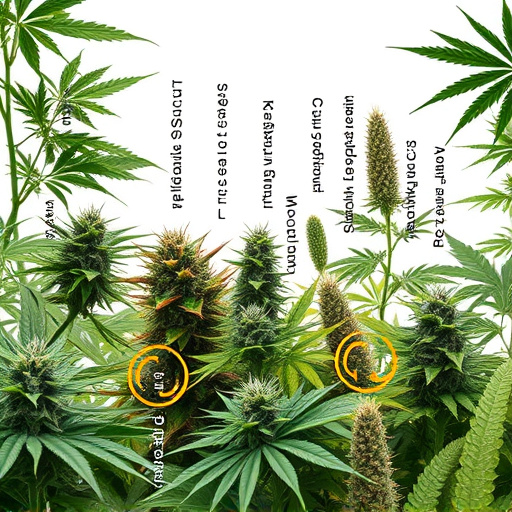
Isolated cannabinoids refer to a process where specific compounds, like THC or CBD, are extracted from the plant and concentrated in pure form. This method allows for precise dosing and targeted benefits. For instance, a high-CBD strain can be isolated to create a product that offers potent anti-inflammatory and anxiolytic effects without the psychoactive properties of THC. Similarly, isolating THC can provide robust pain relief without causing anxiety or paranoia.
This technique is particularly beneficial for patients looking for specific effects from their strains of medical cannabis. It enables them to manage conditions like chronic pain, epilepsy, and inflammation with greater control and precision. Moreover, isolated cannabinoids can be combined in various ratios to cater to diverse patient needs, making them a versatile option in medicinal cannabis treatment regimens.
Comparing Health Benefits and Uses
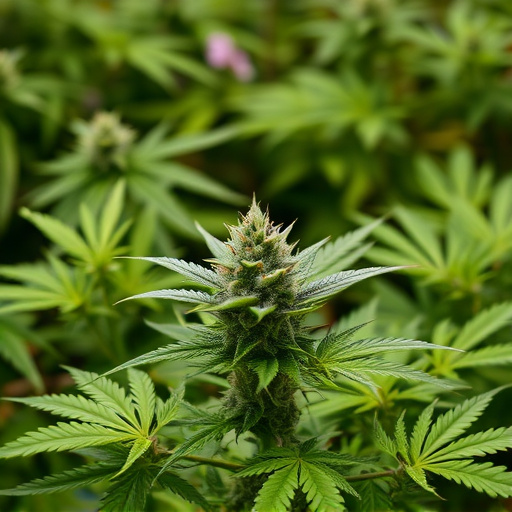
When comparing full-spectrum and isolated cannabis flower in terms of health benefits and uses, it’s crucial to understand their distinct chemical compositions. Full-spectrum cannabis retains all the natural cannabinoids, terpenes, and flavonoids present in the plant. This means that users can benefit from the entourage effect, where these compounds interact synergistically to potentially enhance therapeutic outcomes. As a result, full-spectrum strains are often preferred for their balanced profile, offering a wide range of effects that may include pain relief, anxiety reduction, and improved sleep.
On the other hand, isolated cannabis flower focuses on a single cannabinoid, typically THC or CBD. While this provides a more concentrated dose of the chosen cannabinoid, it misses out on the complementary benefits of the entire plant’s chemistry. Isolated forms are popular for targeted therapy, such as managing chronic pain or reducing inflammation. However, they may not deliver the same range of effects as full-spectrum strains and could potentially lack the entourage effect’s additional therapeutic advantages. The choice between the two depends on individual needs and preferences within the diverse landscape of medical cannabis strains.
When considering different strains of medical cannabis, understanding the distinction between full-spectrum and isolated flower is key. Full-spectrum cannabis offers a holistic approach, providing a diverse range of cannabinoids and terpenes that work synergistically to potentially enhance therapeutic effects. On the other hand, isolated cannabinoids allow for targeted relief by concentrating specific compounds, making them ideal for addressing particular ailments or preferences. Ultimately, the choice depends on individual needs and desired experiences, with both options contributing valuable additions to modern cannabis medicine.



